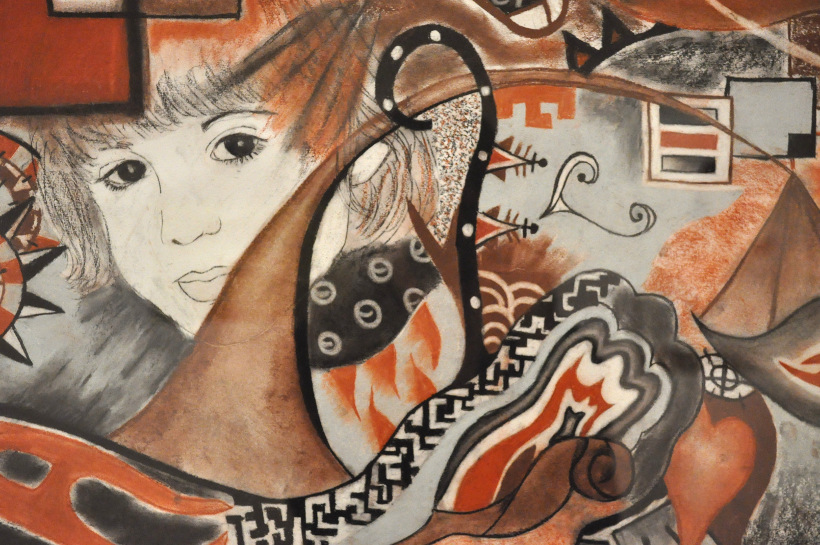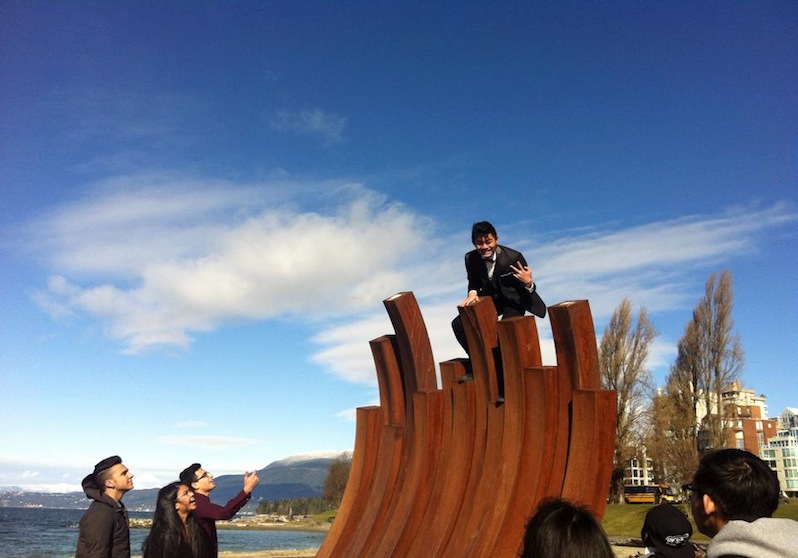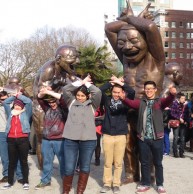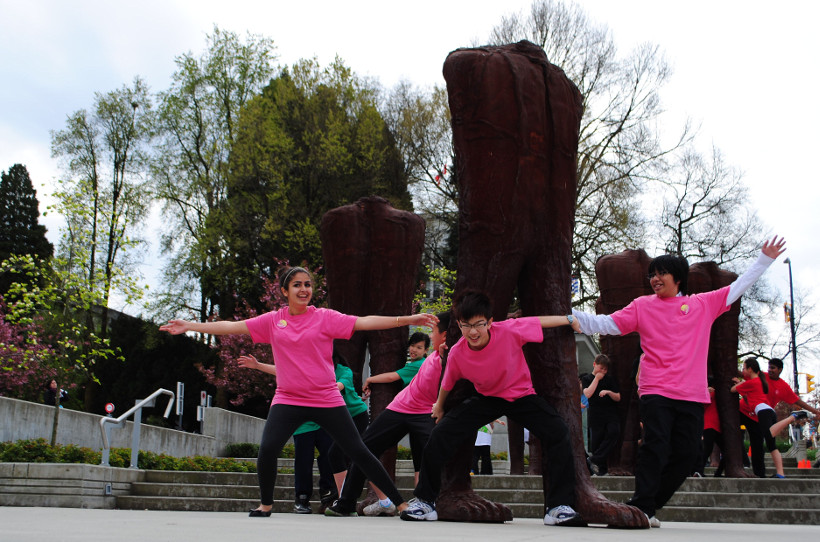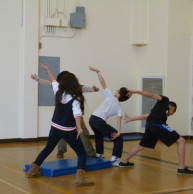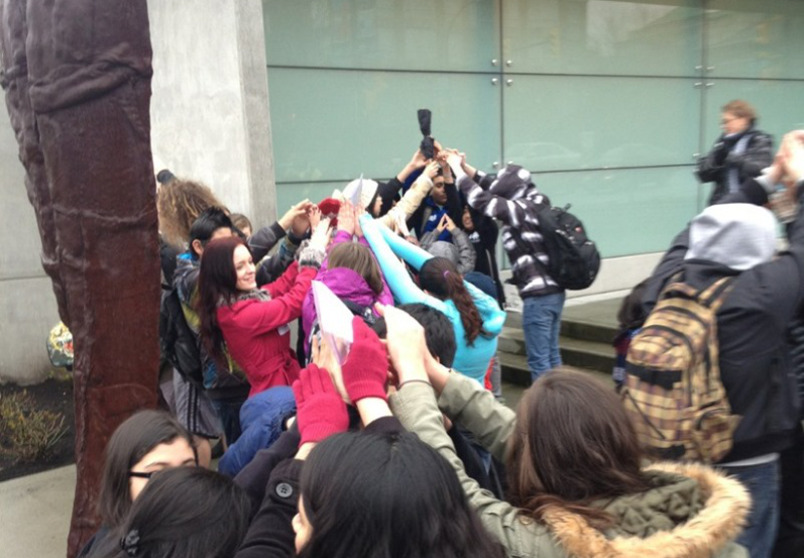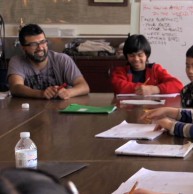Society and Individual Identity
Language Arts - Grade 9
This unit of inquiry is not a recipe book but rather a launchpad to inspire new BIG IDEAS. We encourage you to use and/or modify one, or several of the BIG IDEAS below. Adapt it to the grade/ ability level of your students.
Enduring Understanding
Social values form the individual.
Guiding Questions
How does the diverse society in which we live shape our personal and collective identity?
Mind Opening
Choose or devise practices to encourage students to be open to new experiences and ways of thinking in your classroom. For example, the MindUP in-school program.
Discovery and Inspiration:
Launch the Project
• Introduce the Theme: Present the Enduring Understanding and Guiding Questions using vocabulary that is appropriate for your grade level.
• About Vancouver Biennale: Play a short video.
• Create Project Space: Brainstorm ideas to make the project theme visual and visible using bulletin boards, and/or a project corner to share relevant materials and inquiry questions and processes.
Reference Resources:
• Introduction to Sculpture and Public Art Unit Plan for information on how art has evolved over time and the unique experience sculptures and/or public art brings.
• Vancouver Biennale 2014-2016 Exhibition Theme: Open Borders / Crossroads Vancouver
• Vancouver Biennale Legacy: Walking Figures (Magdalena Abakanowicz, Poland)
• Dough Portraits and other works of Soren Dahlgaard, Denmark from Vancouver Biennale 2009 – 2011.
• About Artist and Artwork (PDF)
Learning to Learn:
Art Inquiry
Make a visit to Walking Figures and encourage students to freely explore and interact with the art pieces individually and in groups. This Art Inquiry process enables the students to practice observing, describing, interpreting, and sharing visual information and personal experiences. Use the Art Inquiry Worksheet (PDF) to guide and capture their ideas and impressions. Customize or create your own Art Inquiry Worksheet as appropriate for your project and class needs.
Shared Insights
• Sharing Art Inquiry Experience: Ask students to share the Art Inquiry Worksheet responses in class.
• Artist Themes – Research: In small groups students rotate between information stations detailing Abakanowicz’s life and work. Station topics include: (1) education and training; (2) lifetime of artwork; (2) materials and processes; (3) beliefs and values. At each station, students answer questions and complete a task. For example, at the station “life’s work” students might plot the artist’s various installations on a map of the world.
• Artist Themes – Identity: Referencing the Walking Figures, discuss how the society has shaped the identity of the artist from the research on the artist. How is the identity reflected on the art piece? Make reference to the guiding question on how does the diverse society in which we live shape our personal and collective identity?
Inquiry Challenges
In shared small group discussions, have each group complete a short answer to the question: where do we find our role within society? and share with the class. Ask the students to take five to ten minutes to describe themselves through a sketch (perhaps a symbol) or through a select few words. Led a discussion to summarize what are the core themes and values the class has identified. Use activities as an Identity Shield.
Giving the students five minutes to think, have them write down twenty traits and characteristics that society guides us to follow and become. Swap and share these with the person next to you and then crumple/throw them away, both literally and figuratively.
Dividing the class into groups, have them collectively brainstorm what it means for them to be a Vancouverite or to a larger extent, Canadian. Share the ideas as a class. What are some of the things that people have come up with? Are they similar to anybody’s perceived self-identity? Why or why not? Discuss the advantages and disadvantages of relating to a larger society.
Using the ideas discussed in class, create a human portrait of yourself that meshes together your self-identity and your larger identity. Depict the image that others project on you looking through a mirror, holding a gaze with an image of who you see yourself as, illustrating the similarities and contrasts between the two personas. Create a ‘How I see myself’ meme that includes how you view yourself, how your peers see you, how your parents see you, how your teachers/boss sees you, and finally how society sees you. Are these very different? Are these similar? How does this make you feel?
Student Creations and Taking Action
Students decide on a method to communicate their personal identity and its relation to collective identity through the use of posters, paintings, written poems, film, sketches or other visual modes.
Rather than celebrating our idea of acceptance through a pink shirt day where the concept is ambiguous and the true intent is masked, have a day where everybody wears their beliefs and traits quite literally on themselves, letting other students appreciate them for who they individually are, and not what they might be.
Reflection
• Teacher and students can reflect on their entire learning process by revisiting the Enduring Understanding and relevant Guiding Questions.
• How did the unit of study open inquiry, create cross–curricular learning opportunities and/or apply learning to real life situations? Has this unit of inquiry changed your opinions, values and world view? In what ways, if any, has it helped you grow as a learner?
Ideas for Cross-Curricular Access
• Language Arts: Author a creative short story that features a setting void of plot, vividly describing your own values and beliefs. Use the tone of the writing and mood to convey the important themes.
• Social Studies: Spanning a timeline of thirty to forty years, depict Canada and its cultural identity, showing how it has transformed over the past few decades. Who were the cultural icons during these periods and how did they influence the masses?
Credits
Written by: Dominic Lee, 2013 UBC Secondary School Teacher Candidate Edited by: Jennifer Massoud, Secondary School Teacher
©2013 Vancouver Biennale
